Have you ever wondered what is in the food you eat? This pizza may contain additional ingredients that you may not be aware of.

A homemade pita bread pizza, garnished with oregano. Geoff Peters from Vancouver, BC, Canada, Creative Commons Attribution 2.0 Generic (CC BY 2.0), Homemade Pita Pizza (5206619742).jpg
According to Canadian Food Inspection Agency (CFIA), food fraud is an emerging global issue. In fact, food fraud “may cost the global food industry $10 to $15 billion per year”. Examples of food fraud may include substitution/addition of ingredients or tampering/mislabeling of food packages, and selling these inferior products at a higher price for profit. Food fraud is problematic; therefore, it is crucial that CFIA and the food industry combat food fraud to protect consumer safety.
However, in 2016, there has been a report of adulterated dried oregano in Australia. Some brands that declare “100% oregano” only have 33% – 50% of actual oregano. The remaining percentage could contain additional olive and myrtle leaves as fillers. The presence of olive and myrtle leaves can pose a health risk, because it can carry a higher amount of pesticides, which can contaminate the dried oregano. Therefore, it is important to find a way to detect these fillers, so that they can be eliminated from the market.
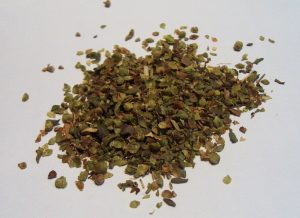
An example of dried oregano. Henna, Creative Commons Attribution-ShareAlike 1.0 Generic (CC BY-SA 1.0), Oregano-spice.jpg
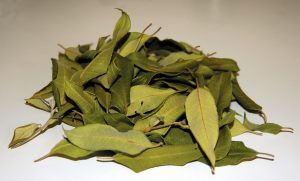
An example of myrtle leaves. division, CSIRO, Creative Commons Attribution 3.0 Unported (CC BY 3.0), CSIRO ScienceImage 3022 Dried Lemon Myrtle Leaves Backhousia citriodora.jpg
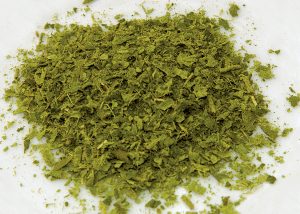
An example of dried myrtle leaves. division, CSIRO, Creative Commons Attribution 3.0 Unported (CC BY 3.0), CSIRO ScienceImage 4242 Dried and Crushed Lemon Myrtle Leaves Backhousia citriodora.jpg
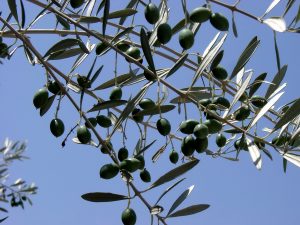
An olive branch. Hans Bernhard (Schnobby), Creative Commons Attribution-ShareAlike 3.0 Unported (CC BY-SA 3.0), Olive branch.jpg
Recently, a paper from the journal of Food Chemistry published in 2019, suggests that GC-MS (a common instrument in a Chemistry lab) can be used to detect and measure the amount of pesticides in adulterated oregano samples. By identifying the most predominant pesticides in adulterated oregano, the pesticides can be used as potential markers for identifying adulterated oregano.
But how does GC-MS work? In the “GC” part of the instrument, the pesticides travel through the column, in different speeds, based on its unique chemical properties. Once all of the pesticides are separated, they go through the “MS” part of the instrument, where they get fragmented by a beam of electrons before it travels through the mass analyzer and reaches to the detector for data collecting (see image below).
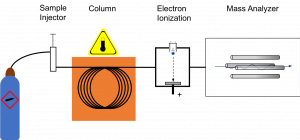
A schematic of the GS-MS instrument. Detector is attached to the right side of the mass analyzer (not shown). Cwszot, Kkmurray, Creative Commons Attribution 2.5 Generic (CC BY 2.5), Electron ionization GC-MS.png
As a result, pesticides (cyfluthrin (sum), cyhalothrin lambda, and pyriproxfen) are present in higher quantity in the 34 adulterated oregano samples than in the 42 genuine samples. Therefore, cyfluthrin, cyhalothrin lambda, and pyriproxfen could be used as potential markers for detecting adulterated oregano.
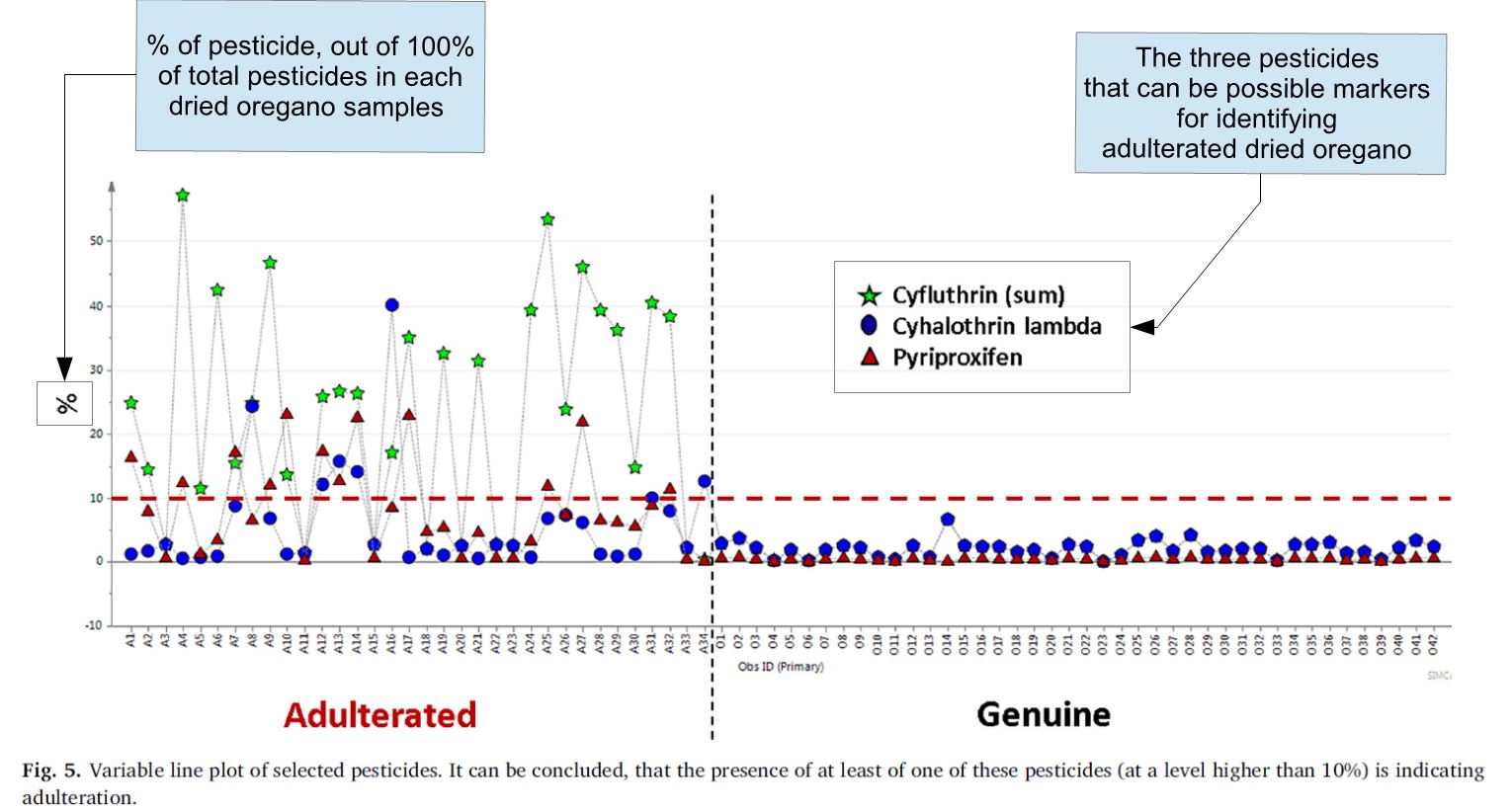
Graph from the research paper. Click on the image for high-definition. Drabova et al., Creative Commons Attribution 4.0 International (CC BY 4.0), Adapted from Figure 5 in Food fraud in oregano: Pesticide residues as adulteration markers
In conclusion, it is possible to identify the adulterated samples by using a chemical technique to stop food fraud. Although CFIA and food industries work to protect consumers from food fraud, CFIA suggests a few ways for consumers to identify food fraud.
But as for me, I will stick to growing my own oregano in my backyard.
Updated: March 28, 2019
Reference:
Canadian Food Inspection Agency. The CFIA Chronicle. http://www.inspection.gc.ca/about-the-cfia/the-cfia-chronicle-fall-2017/food-fraud/eng/1508953954414/1508953954796 (accessed Mar 08, 2019).
Canadian Food Inspection Agency. Food fraud. http://www.inspection.gc.ca/food/information-for-consumers/food-safety-system/food-fraud/eng/1548444446366/1548444516192 (accessed Mar 08, 2019).
Canadian Food Inspection Agency. Types of food fraud. http://www.inspection.gc.ca/food/information-for-consumers/food-safety-system/food-fraud/types-of-food-fraud/eng/1548444652094/1548444676109 (accessed Mar 08, 2019).
The Sydney Morning Herald. Food Fraud: Popular oregano brands selling adulterated products. https://www.smh.com.au/business/consumer-affairs/food-fraud-popular-oregano-brands-selling-adulterated-products-20160405-gnygjo.html (accessed Mar 08, 2019).
Drabova, L., Alvarez-Rivera, G., Suchanova, M., Schusterova, D., Pulkrabova, J., Tomaniova, M., . . . Hajslova, J. Food fraud in oregano: Pesticide residues as adulteration markers. Food Chemistry. [Online] 2019, 276, 726-734. doi:10.1016/j.foodchem.2018.09.143 (accessed Mar 08, 2019).
Canadian Food Inspection Agency. How food fraud impacts consumers. http://www.inspection.gc.ca/food/information-for-consumers/food-safety-system/food-fraud/how-food-fraud-impacts-consumers/eng/1548444986322/1548445033398

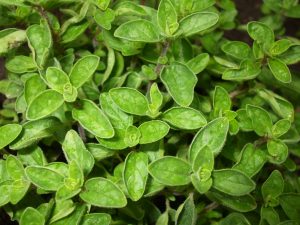
6 responses to “Is it actually 100% oregano?”